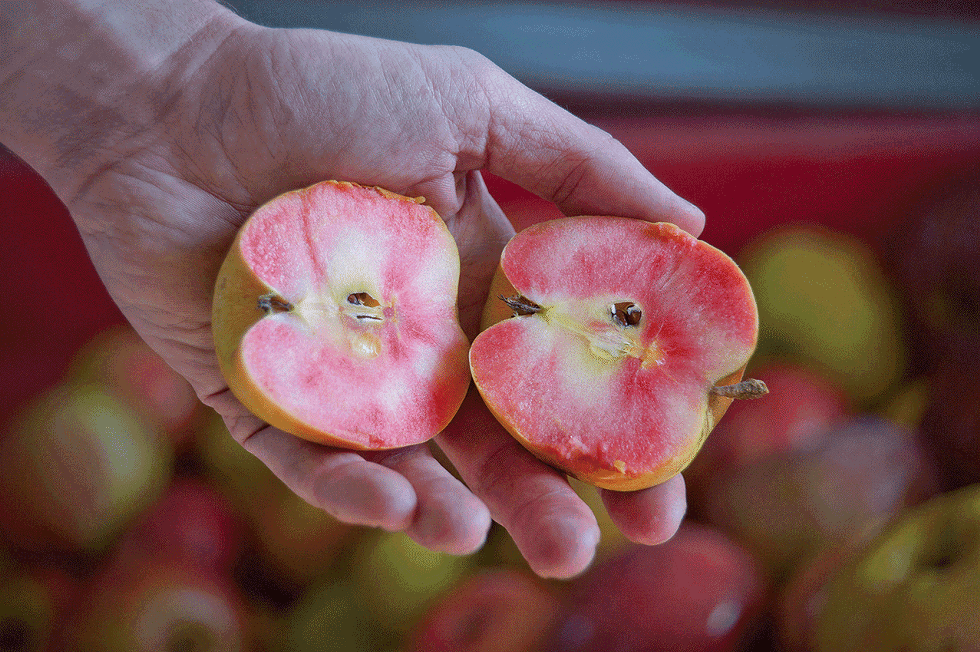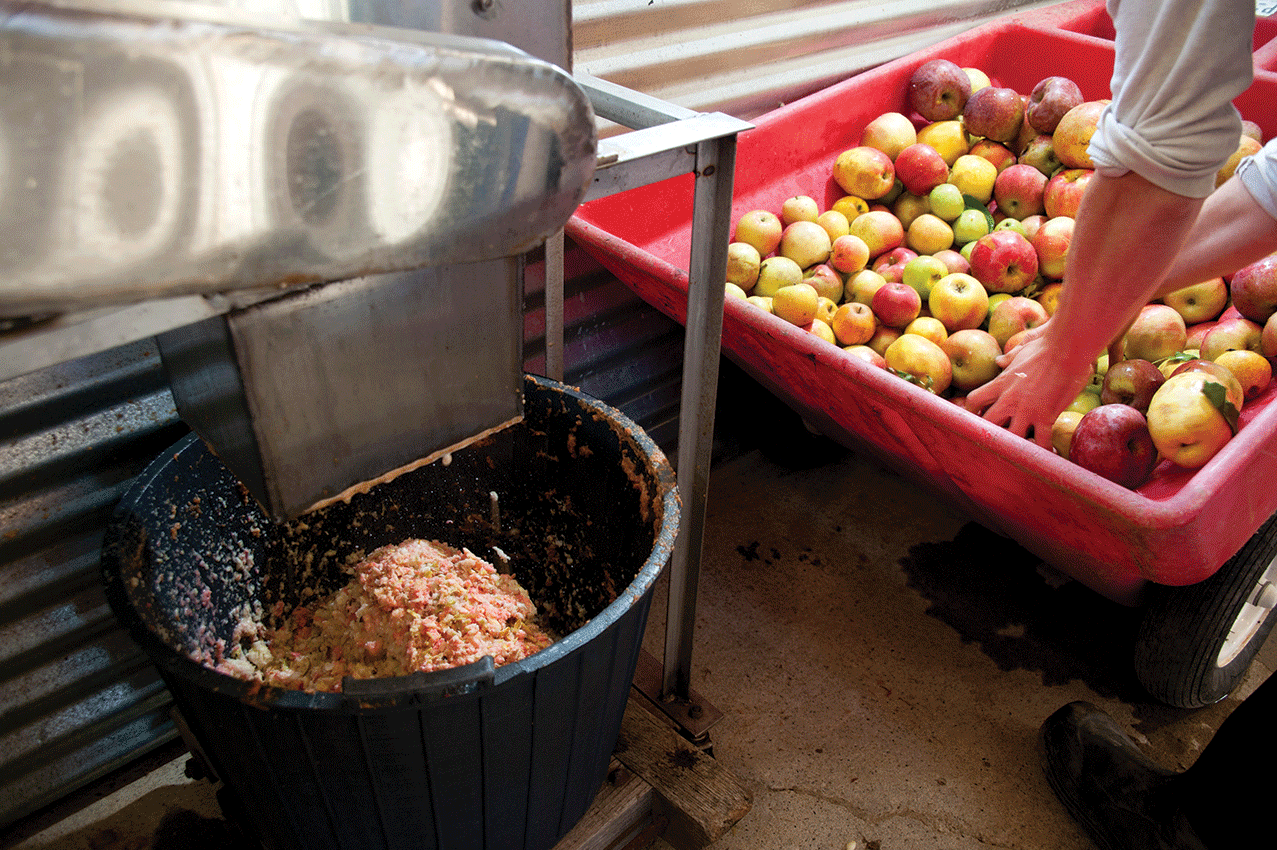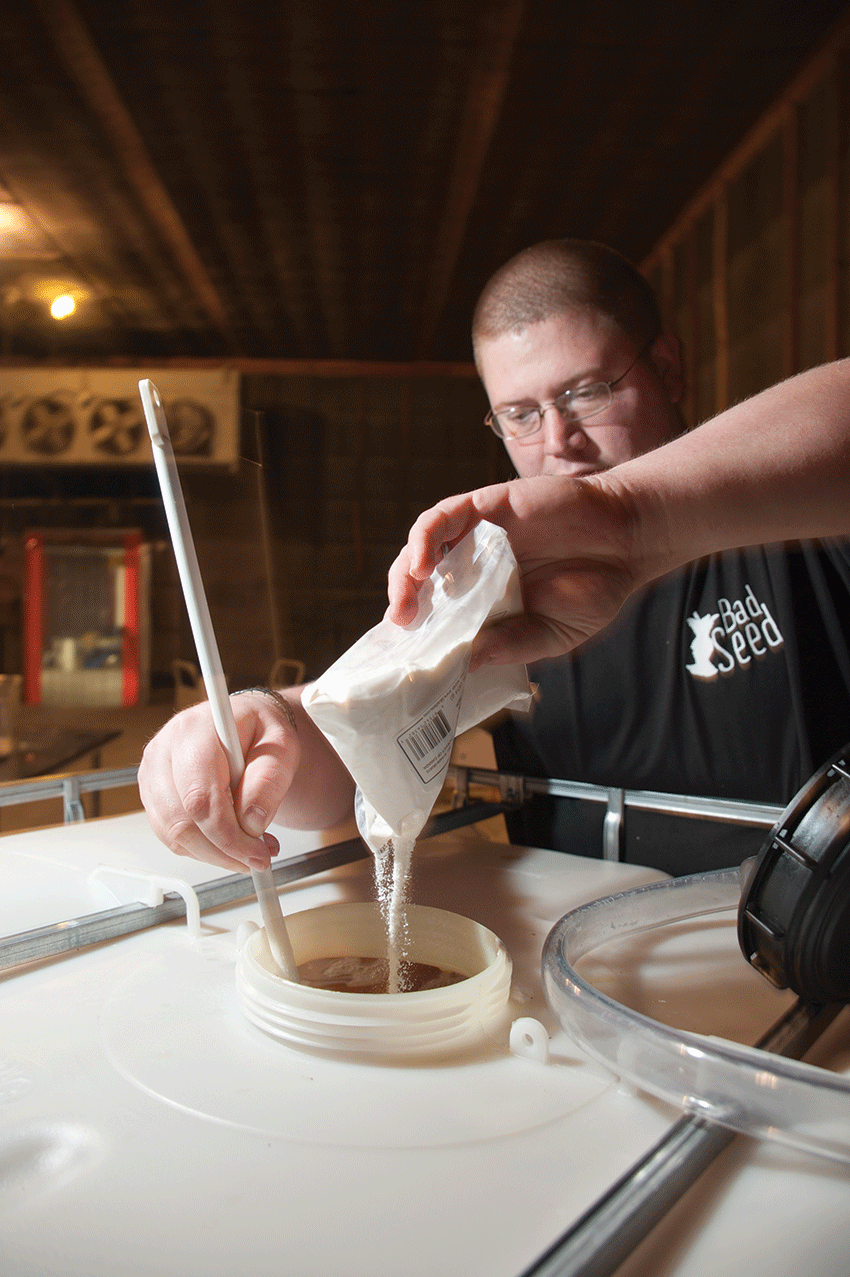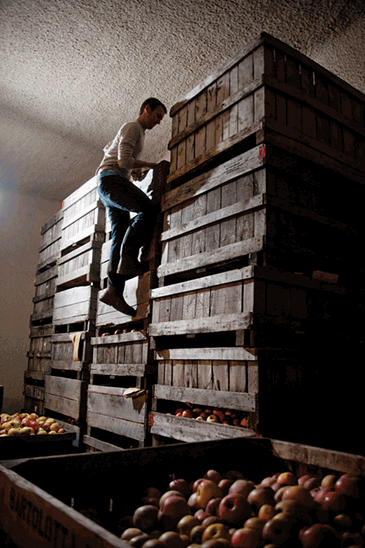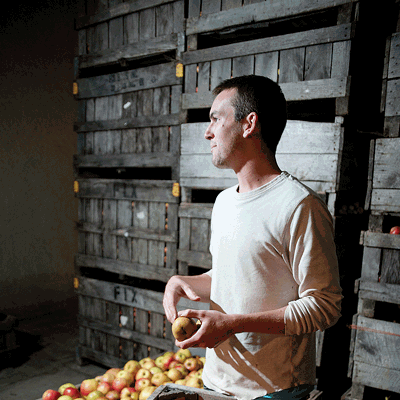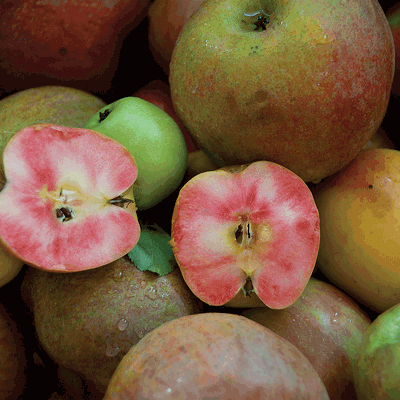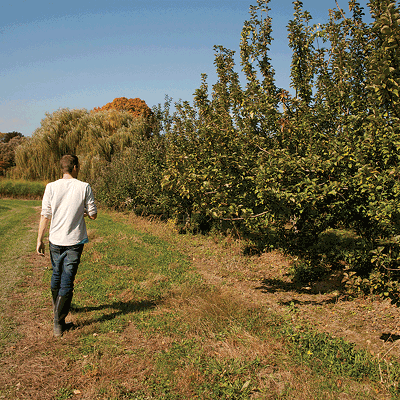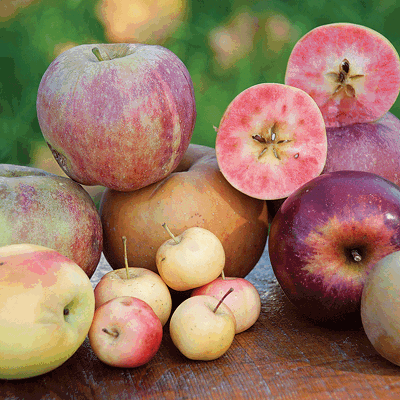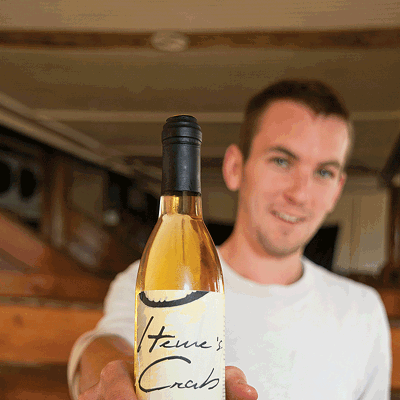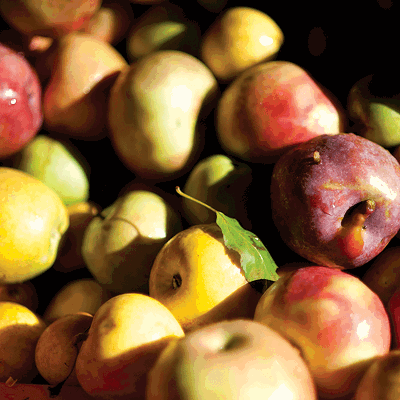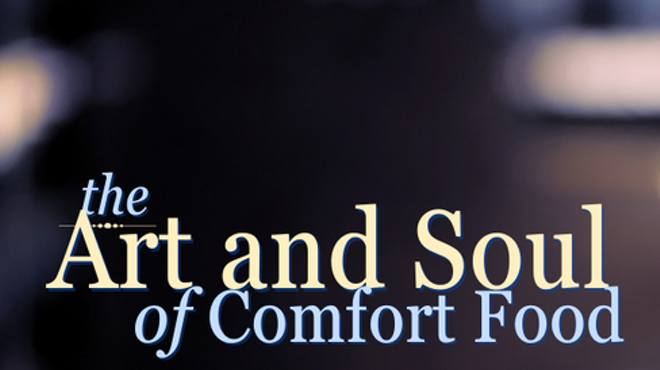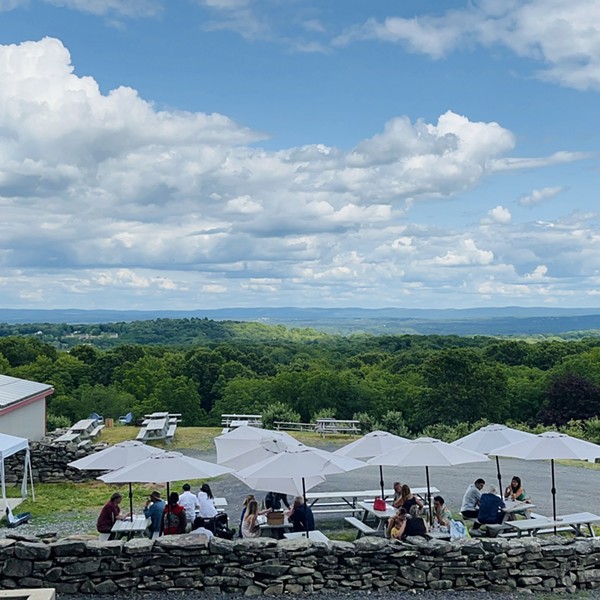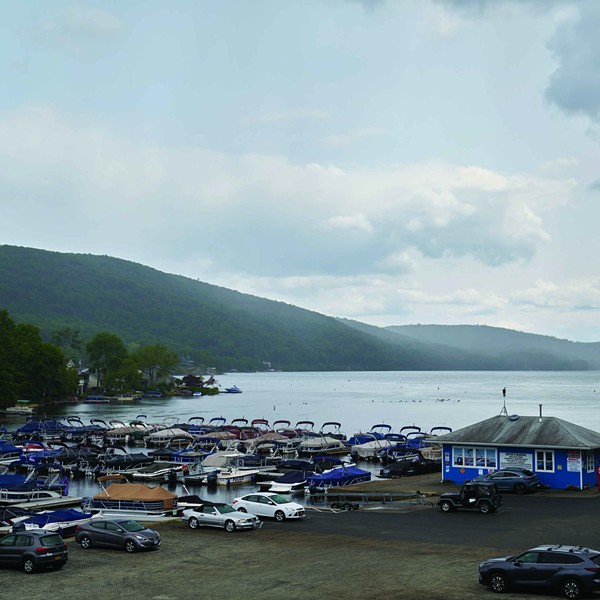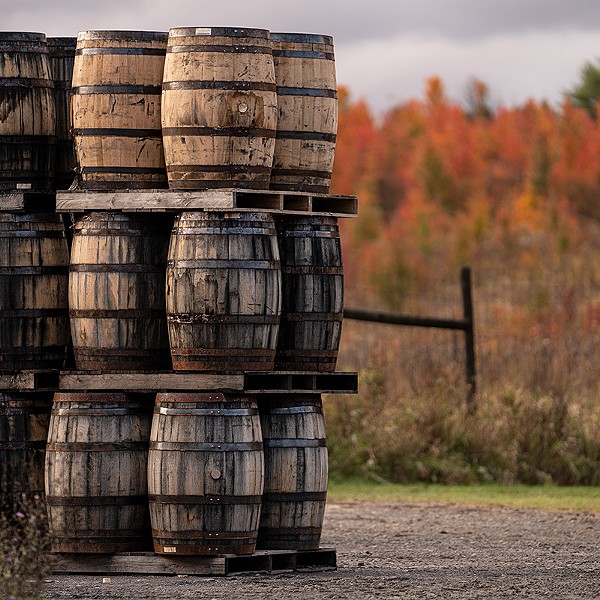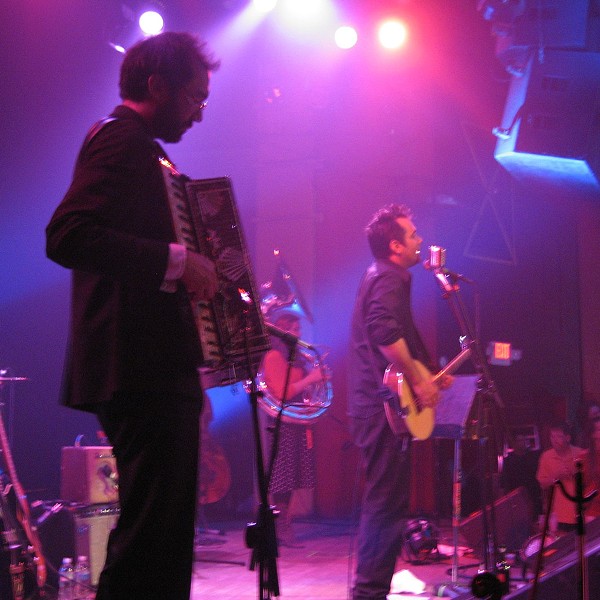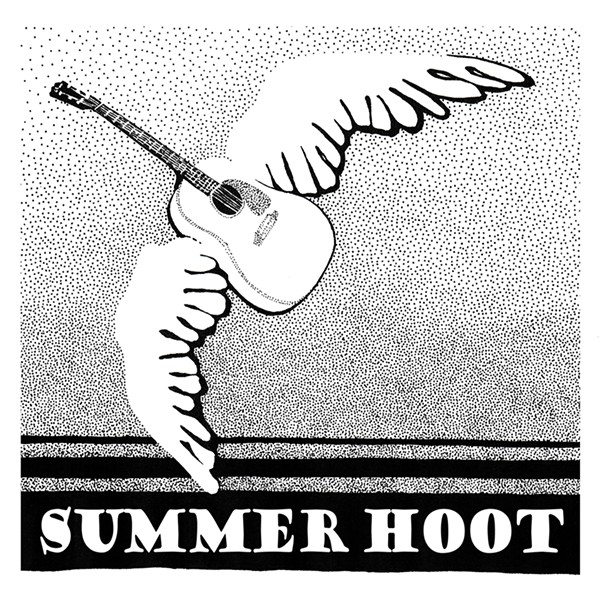The second annual Cider Week took place in October, with events in New York City and the Hudson Valley. A project originated by Glynwood, the nonprofit organization dedicated to promoting sustainable agriculture in the region, the weeklong festival featured tastings, meals with cider pairings, and presentations by cider makers—all part of an ongoing effort to educate the public about America’s oldest drink. During Prohibition, orchards dedicated to growing cider apples were planted with sweet table varieties. Now, with renewed interest in hard cider growing fast, local farmers are replanting the older varieties and fermenting their juice into some compelling beverages.
Sara Grady, director of special projects at Glynwood, describes the unique continuity of apple orchards: “Fruit growing is the only sector of agriculture where you can frequently see three or four generations of succession in the Hudson Valley. It’s a profound statement. In what form of agriculture are you more rooted?” The cider renaissance has arisen as the new generation responds to present economic realities: “Previous generations built profitable eating apple businesses, whether for supermarkets, export, or juice. But recently, that business just blew up,” says Grady, due to lower-priced foreign apples. Young farmers, some with their parents and some on their own, are creating new ventures that focus on adding value to apples, and in the process add still more value and variety to the ever-broadening range of excellent local products for us to enjoy.
In case you missed out on Cider Week, here’s a primer on the region’s offerings. Whether beer or wine is your go-to libation, you’ll find something that fits your palate and complements your dinner. Cider can be divided into sweet and dry styles; the sweet versions resemble the ciders made in Normandy, while the dry style is more English. Both are food-friendly; in general, the sweeter versions should be treated like off-dry Rieslings, which match well with Asian flavors and spice, while the dry versions are closer to beer with their tannic and slightly bitter notes. It’s also easy to overthink pairings; do what New Yorkers did for centuries before Prohibition and drink the cider you like with the food you like.
Doc’s Draft hard ciders are made by the Warwick Valley Winery and Distillery, one of the sponsors of Cider Week. Their annual output is huge—100,000 gallons a year—and, besides regular, their range includes pear, raspberry, currant, and pumpkin (in season, which is now). Doc’s is by far the easiest to find in stores, and offers a good introduction to those unfamiliar with hard cider. Warwick also makes the Pomme Bullé cider for the Hudson-Chatham Winery in Ghent. The apples are 100 percent Northern Spy, all from one orchard in Germantown, making this cider the equivalent of a single-vineyard wine. It’s elegant, lightly sweet, and has a gently funky complexity. At 5 percent alcohol, it makes for a fine aperitif. “We’re a winery, but we love cider, and it’s important to New York State,” says Dominique DeVito, who owns the winery with her husband Carlo. They produce about 200 cases a year. Carlo is a big fan of the cider kir, a cocktail made by adding some of the region’s excellent cassis to their sparkling cider.
Warwick also bottles Tim Dressel’s Kettleborough Cider, a brand new venture that he launched from his family’s orchard in New Paltz. He is renting a tasting room behind the farm stand, and has already sold half of the 200 gallons he made in his first year. At 29 years old, he’s off to a good start; his bone-dry, English-style blend of Northern Spy, Idared, Golden Russet, and Empire apples was fermented on Champagne yeast at the Whitecliff winery’s facility and offers a strong apple character, bracing acidity, and a firm tannic grip. Lovers of hoppy beers and assertive red wines will find much to enjoy, and Dressel suggests that customers with a taste for sweeter ciders can make an apple mimosa by adding a bit of unfermented cider to soften the edges. He hopes to build a new building on the property in the next year or two so he can ferment and bottle on site.
Another new arrival is the Bad Seed Cider Company, a collaboration between Albert Wilklow and Devin Britton (both also 29) that began selling this spring. Wilklow grew up on his family’s orchard in Highland, and he and Britton have taken their love of home-brewed beer and brought it to bear on apples. “We love to play around; we’re trying all sorts of things,” explains Wilklow, mentioning a new strawberry-rhubarb flavor and a bourbon barrel-aged version. They made about 1,000 gallons last year, and are on track to produce three times as much this year. In addition to their regular hard cider, they use Belgian yeasts to make witte and abbey-style ciders, and add hops to another that they call an IPC (India Pale Cider). They sell at several greenmarkets in Brooklyn, and are expanding their facilities to meet the growing demand.
“I have learned that there’s no limit to the subtle flavors cider can have, and it’s awesome for carrying other flavors.” That’s Doug Fincke, who makes Annandale Atomic Hard Cider with his 25-year-old son Adam at the Montgomery Place orchards in Annandale. Made from a blend of the many varieties in their orchard, it has a rich apple character and lively acidity. Fincke is effusive and expansive on the subject of apples, and his enthusiasm is contagious: “In the spring, the blossoms come out and they seduce you with their scent, then you work hard all summer to get the fruit, then in the winter the wood keeps you warm and the cider gives you a buzz. It’s a beautiful journey; it’s like bonding with the trees.” They sell it from their farm stand on Route 9G, but it’s done for the year; aspiring druids and dryads will have to wait until spring to try it.
Continuing on the more traditional English farmstead side of the field, Jeff Soons of Orchard Hill in New Hampton makes a field blend with a fruity nose, lots of complexity, and firm tannins. Also in Orange County, Andrew Brennan’s Aaron Burr Cidery is making another tangy and tannic old-school example as well as a version fermented with ginger and carrots that tastes like a very adult version of ginger ale and positively begs to be mixed into a dark and stormy with some good rum. Elizabeth Ryan, of Hudson Valley Farmhouse Cider in Staatsburg, makes a sturdy version well worth sampling. She, along with several other producers, went to France last fall as part of Glynwood’s Apple Exchange. They visited and learned from award-winning cider makers in Normandy, where wild yeasts are used almost exclusively. French producers use hundreds of different types of cider apples and a special fermentation process called keeving to achieve a profoundly complex product. Ryan and some of her colleagues have begun experimenting with these methods, and many of them are planting the bittersweet and bittersharp varieties of apple that make the most interesting cider.
Rounding out the sweet end of the spectrum, Slyboro Cider House up in Granville makes two noteworthy off-dry sparklers: Hidden Star and Old Sin. The former is a blend of Northern Spy and Liberty, and strikes a nice balance between appley accessibility and farmstead funk. The latter is blended with some of their ice cider—made by concentrating sugars through freezing, like ice wine—and is quite sweet. The ice cider is available separately, and is ideal for accompanying desserts (like apple pie) or just being dessert by itself. Naked Flock, a product of Applewood Winery in Warwick, makes three flavors of cider: Original (sweetened with honey), Draft (fermented with Belgian ale yeast and sweetened with maple syrup), and Pumpkin.
Though it’s made in New Hampshire, Steven Wood’s Farnum Hill cider is worth mentioning both for its superlative quality and because Wood has been influential and helpful to local producers, offering guidance as they come together to form the Hudson Valley Cider Alliance. The Alliance, another facet of Glynwood’s strategy to build a viable apple industry in the region, will be meeting soon with New York State officials to discuss ways in which regulations can be made more friendly to small producers. Grady explains some of the obstacles: “We haven’t had a hard cider industry for decades, so any problems in the law are just becoming apparent now. It’s very convoluted. We’re dealing with an old law and a new industry.” There are discrepancies between federal and state laws governing cider, and the current state law caps cider at 7 percent alcohol, which, Grady says, “is not the true alcoholic potential of New York State apples.”
After nearly a century of obscurity, hard cider has come roaring back to life across the country. MillerCoors recently bought a Minnesota-based cider operation, and Michelob has launched a low-calorie cider (which the New York Cork Report compares favorably with toilet water). Do not concern yourselves with these corporate simulacra; they have as much personality as the eponymous beers. Focus your attention instead on the talented local farmers who are rediscovering America’s original table wine and re-establishing a nascent industry in the process. If you support their efforts, in a few years you’ll be able to survey the region’s thriving cider scene and proudly tell your drinking buddies: “We built that.”
- Home
- Arts
- Food & Drink
- Towns
- Home & Design
-
Towns
- Accord
- Amenia
- Beacon
- The Berkshires
- Catskill
- Chatham
- Cold Spring
- Cornwall
- Ellenville
- Gardiner
- Garrison
- Germantown
- Goshen
- Great Barrington
- Hunter
- High Falls
- Highland
- Hillsdale
- Hopewell Junction
- Hudson
- Hyde Park
- Kerhonkson
- Kinderhook
- Kingston
- Marlboro
- Middletown
- Millbrook
- Millerton
- Montgomery
- Mount Tremper
- New Paltz
- New Windsor
- Newburgh
- Orange County
- Pawling
- Peekskill
- Phoenicia
- Poughkeepsie
- Putnam County
- Red Hook
- Rhinebeck
- Rosendale
- Saugerties
- Stone Ridge
- Sugar Loaf
- Tivoli
- Wappingers Falls
- Warwick
- Woodstock
- Westchester
- Lifestyle
- Horoscopes
- Cannabis
- Wellness
- The River
- Events
- Chronogrammies
- Newsletters
- Add Your Event
- Support Us
- Login
- sign in
- Username
Adam Fincke holds a Hidden Rose apple.
[]
About The Author
Add a comment
Subscribe to this thread:
By Email
Support Chronogram
Related Content
Website
Chronogram







